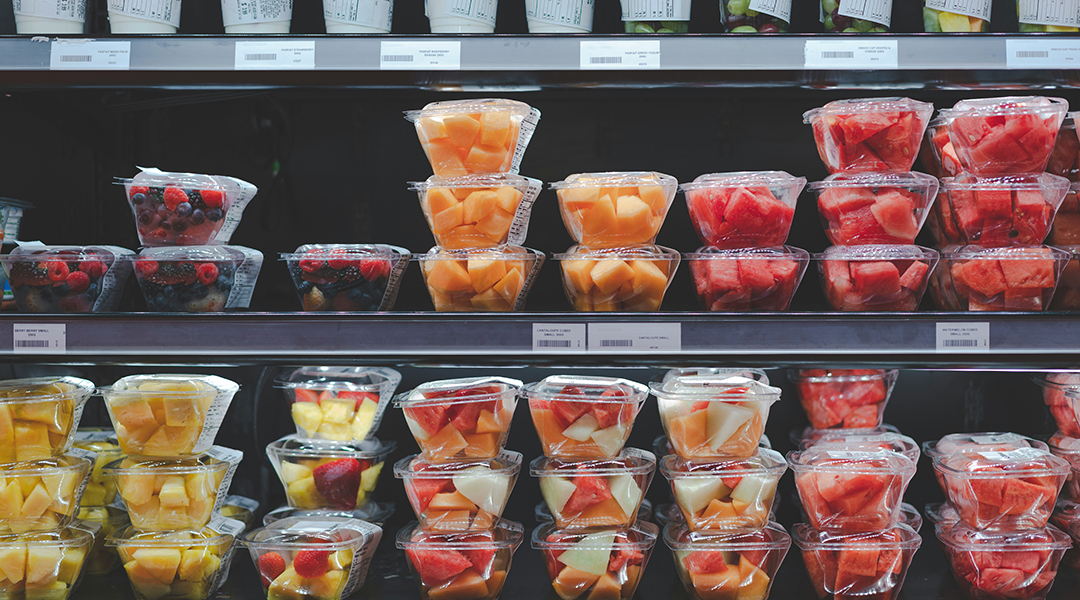Processed foods receive a lot of negative attention but when it comes to nutrition, their bad reputation may not be completely warranted.
In a recent study, researchers compared two diets: one emphasizing minimally processed foods and the other emphasizing ultra-processed foods. They found that switching to “simpler” foods, meaning less processed, does not necessarily guarantee a healthy diet. This suggests that the specific types of foods we consume may be more important than their level of processing.
“This study indicates that it is possible to eat a low-quality diet even when choosing mostly minimally processed foods,” said Julie Hess in a press release, a Ph.D, a research nutritionist at the USDA-ARS Grand Forks Human Nutrition Research Center, who led the study.
“It also shows that more-processed and less-processed diets can be equally nutritious or non-nutritious, but the more-processed diet may have a longer shelf life and be less costly,” she continued.
What are processed foods?
Processed food refers to the extent of physical, biological, or chemical alterations a food undergoes before consumption. Minimal processing includes cleaning, cutting, grinding, drying, fermentation, or pasteurization, seen in foods like cut or frozen vegetables and packaged nuts, grains, and cereals.
On the other hand, highly processed foods involve significant transformations such as hydrogenating oils, modifying starches, adding flavor enhancers, or coloring agents. Examples include canned or instant soups and sauces, soft drinks, flavored yogurt, and margarine.
Researchers from the USDA-ARS Grand Forks Human Nutrition Research Center, Soy Nutrition Institute Global, and the Universities of Minnesota and North Dakota questioned the notion that increasing intake of minimally processed foods automatically improves diet quality.
This follows previous findings that showed it’s feasible to create a nutritious menu adhering to dietary guidelines even when most calories come from foods classified as ultra-processed by the NOVA scale, which categorizes food based on processing levels.
To find out, they made modifications to a previoulsy established menu for the typical Western diet, which tends to include calorie-dense and nutrient poor foods, such as refined grains, red meat, high-sugar foods, and drinks, and high-fat diary products. They then created a similar menu that swapped out highly processed foods for simpler, minimally processed options where possible.
The menu with less processed foods obtained 20% of its calories from minimally processed foods and the remaining 67% from ultra-processed foods; however, specific food details were not available at the time of publication.
The team then compared nutrient content and index scores for both menus, along with evaluating the cost and shelf-life of included foods to assess nutritional and socioeconomic outcomes.
Low or high processing, same poor nutrition
When it came to nutrional value, the two diets received Healthy Eating Index scores of 44 and 43 out of 100, respectively. This is a relatively low score that reflects poor adherence to the Dietary Guidelines for Americans, according to the press release.
The less processed menu was also more than twice as expensive, with a per person cost per day of $34.87 versus $13.53 for the ultra-processed menu. The minimally processed food had a shorter shelf life too, with a median time to expiration of 35 days versus 120 days for the more processed options.
“This study indicates that it is possible to eat a low-quality diet even when choosing mostly minimally processed foods,” commented Hess.
Simply swapping out processed foods for less processed options will not automatically improve nutrition. In fact, a previous study by Hess and her colleagues showed a high-quality menu that meets dietary guidelines is possible even with the majority of calories coming from high-processed foods.
This study advises against dismissing processed foods solely based on buzzwords, as this approach could impact both budget and nutrition negatively. “The results of this study indicate that building a nutritious diet involves more than a consideration of food processing as defined by NOVA,” said Hess.
For consumers this means a healthy diet requires taking into account the types of foods and their nutritional value instead of unnecessarily focusing on their levels of processing.
Reference: Julia Hess, et al., Unprocessed, but SAD: A Standard American Diet Made With Less-Processed Foods Is Still a Standard American Diet. Abstract presented at NUTRITION 2024, June 29 – July 2 2024 in Chicago, IL, USA.
Feature image credit: White.Rainforest ™︎ ∙ 易雨白林 on Unsplash

















